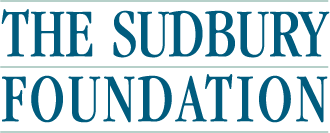About the Atkinsons
“The Foundation is guided by the Atkinsons’ generosity and commitment to the people and places that brought meaning to their lives.”
In 2002, long-time Sudbury Foundation Trustee John Taft, who served on the board from 1973 until his retirement in 2007, wrote a charming history of the Foundation entitled “The Sudbury Foundation: Gift of Herbert and Esther Atkinson.” The following is an excerpt from his chapter on the Atkinsons.
Herbert J. Atkinson and Esther M. Peterson were born and raised in Washington state: he in 1894 in Seattle, she in 1887 in Spokane. They both learned early on to take care of themselves: his parents (Fred Atkinson and Lottie Fleming) were divorced in his youth, her parents died before she reached her majority, and she lived with a family named Collins in Seattle while attending school. Herb studied for a career in insurance and marketing at the University of Washington. At that time he met petite Esther and they were married. Esther was his partner in his early adventures and plans and remained his partner in all his activities through fifty years of a happily married life.
At an early age, Herb became interested in boats and automobiles, avocations that continued throughout his life. He had a boat while at the University, and his knowledge and interest in cars included dismantling and rebuilding and tinkering with motors and other parts.
Early in their marriage, Herb and Esther moved to Denver, Colorado. There was sailing and boating to be had on the lakes around Denver, and his collection of large cars at one time or another included Franklins, Pierce Arrows and Rolls Royces. One of the latter he kept and eventually brought to Sudbury.
Herb developed an interest in the Sundstrand Adding Machine, became associated with this company, and was responsible for an improvement in this machine. At about this time (the early twenties), business took Herb to Boston and he decided he liked the area, the people, and the boating opportunities. At first the couple lived on the North Shore, but in 1928 they found and bought a 100-plus acre farm in Sudbury, the old Perry Homestead. The house was a 19th century colonial with two separate buildings for keeping sheep, chickens and horses and other farm uses. In the early 1920’s, this property had belonged to Babe Ruth and his wife, who added on the two large wings.
Around 1931, Herb was introduced to the concept of testing the soil to determine if the pH was within the proper range for crops to grow and whether there was adequate nitrogen, phosphorus and potassium. The chemical formulas for making the four test solutions had been developed by agronomists at the University of Massachusetts, which made it possible for individuals to prepare their own test kit at home. Herb and Esther did just that, buying metal boxes, glass bottles, and chemicals, mixing the solutions and packaging them with instructions in their own kitchen. He sold the first ones to greenhouse operators and farmers in the area. Paul Rhodes of Sudbury, a horticulturist and landscape designer, assisted Herb in the early days.
Herb was always a student of marketing, and he worked tirelessly on the distribution end of their Sudbury Laboratory soil-test kit products. The office was in the large east wing of their house, and Esther was the original office workforce. Herb really made the soil-test kits go. He remodeled the barn, moved his office and lab to this building and began to expand, later moving the manufacturing operation to the old chicken house. Herb was a successful businessman. Today we would call him an entrepreneur.
He frequently gave new promising products a try – unless they didn’t make money or until a big company decided to take over the niche. The Sudbury Laboratory grew and prospered, adding Chaperone products for dog repellents, and Marine products for the growing recreational boating field. Product distribution was expanded over essentially the whole United States and into Canada with Herb and Esther traveling extensively to visit customers. After World War II, he expanded his sales abroad, first through the Sudbury Laboratory of India in Calcutta, and the Sudbury Laboratory of Europe and Africa, and then the Sudbury Laboratory International of Hamilton, Bermuda.
He and Esther were traveling literally around the world, and more than just once. They took keen interest in the sights and the people of the countries they visited.
Herb and Esther had no children, but they had a genuine affection for the youth of Sudbury, especially those who were making the effort to complete their education but needed additional financial support. As Harry Bayliss, their banker, put it: “Herb was a man who was always helping other people help themselves. He took pride in the community he lived in.” Herb and Esther had no close relatives and they were beginning to amass some wealth. The stage was set for them in 1952 to found and fund The Sudbury Foundation. They must have planned from that point on to will all their worldly wealth to the Foundation.
Herb died on October 4, 1966 at age 72. Esther died on September 4, 1973 in Sudbury at age 86. Herb and Esther are both buried in the Town cemetery in Sudbury by a simple but lovely native stone from the farm where they lived full lives together.
We believe this is a Sudbury Laboratory Soil Test Kit in this charming Norman Rockwell sketch.
Long-time residents of Sudbury, MA, Herbert and Esther Atkinson lived in the former Babe Ruth house on Dutton Road.
Soil Test Kit from the Atkinson’s successful company Sudbury Laboratory.






